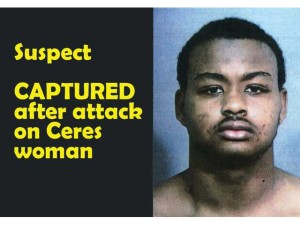By Michael Rushford
 As California continues to experience an increasing number of serious crimes committed by habitual criminals free from prison under Realignment (AB 109) a panel of federal judges has ordered Governor Brown to release another 9,600 inmates by the end of this year. This order has been appealed to the U. S. Supreme Court, which should delay any releases for several months, but the erosion of public safety under the Realignment law remains a real and growing threat to law-abiding Californians.
As California continues to experience an increasing number of serious crimes committed by habitual criminals free from prison under Realignment (AB 109) a panel of federal judges has ordered Governor Brown to release another 9,600 inmates by the end of this year. This order has been appealed to the U. S. Supreme Court, which should delay any releases for several months, but the erosion of public safety under the Realignment law remains a real and growing threat to law-abiding Californians.
“If the inmate releases ordered by the federal court are upheld, it would be like throwing gasoline on an already serious fire,” said Michael Rushford, President of the Sacramento-based Criminal Justice Legal Foundation.
The Foundation has been monitoring the impact of Realignment on crime in California over the past 20 months. A preliminary report from the FBI indicates that over the first full year under the new law’s requirement that criminals it defines as “low level” be kept in counties, crime rates have risen sharply. The Foundation’s analysis of those reports is available here.
Statistics, however, don’t describe what the increased crime means in human terms. Recent news reports from across California present the real picture.

Dustin Kinnear
Last month, 26-year-old Dustin Kinnear was arrested for the June 18 murder of 23-year-old tourist Christine Calderon in Hollywood. Kinnear had been released from prison just 11 days prior. ABC News in Hollywood reports that Kinnear had been arrested over 40 times prior to this attack, seven of those arrests stemming from assault with a deadly weapon. Realignment does not classify assault with a deadly weapon as a serious or violent crime, which allowed Kinnear to be back on the streets the day he stabbed and killed Calderon.

Adrian Madrigal
On June 21, 62-year-old Napa retiree Don Buffington was stabbed to death in his home in what police believe was a burglary gone wrong. The suspect, 24-year-old Adrian Madrigal, stabbed the victim multiple times in the torso, and then proceeded to steal jewelry from the home along with the victim’s car. An article in the Napa Valley Register reports that Madrigal has had several encounters with Napa police over the years and was on probation following a 2012 conviction of assault with a deadly weapon, which Realignment ranks as a non-serious crime.
Joseph Munoz, a murder suspect, was arrested on June 23 after his girlfriend Cassandra Deleon lead San Luis Obispo Sheriff deputies on a high speed chase. CalCoast News reports that deputies had been searching for Munoz after naming him a person of interest in a fight that left a 25-year-old victim dead. Deleon, was free on probation under Realignment when she led officers on the chase through Santa Maria.
A family moving cross-country stopped on June 23 at a Southern California motel for a night of rest. The next morning they discovered that their moving truck, containing all of their belongings, was stolen. Doug Saunders of the Inland Valley Daily Bulletin reports that Los Angeles County Sheriff’s detectives arrested Andy Monreal (on the streets under Realignment) after finding roughly half of the stolen property in a storage unit. Detectives also found a “significant amount of drugs” and a loaded firearm in the unit, and charged Monreal with additional felonies. Monreal had warrants in two other California cities at the time of his arrest.
On June 27, police in Fontana were led on a high speed chase through residential neighborhoods in pursuit of Bryan Keddy, a man released under Realignment and wanted for dealing methamphetamine, which the new law defines as a non-serious crime. Doug Saunders of the Inland Valley Daily Bulletin reports that during the high speed pursuit, Keddy allegedly rammed his car into a police vehicle to avoid arrest, but was eventually caught and charged with evading officers and assault with a deadly weapon, which Realignment also defines as non-serious crimes. This is the third time Keddy has been arrested for violating his Post-Release Community Supervision.
AB 109 offenders are not only a problem in our communities, they are threatening the safety in county jails across the state as well. Richard K. De Atley of the Press-Enterprise reports that jails in Riverside County are experiencing a huge increase in violent attacks, citing a 100% increase in violent inmate-on-inmate attacks, and a 50% increase in attacks on jail staff since 2011. Hardened criminals, that prior to Realignment would serve their sentences in state prison, are creating a dangerous atmosphere for other jail inmates and staff alike.
Two stories published in the July 7 Sacramento Bee reported on the 2012 increases in property crimes and the use of methamphetamine in the county, problems that most counties across California are experiencing. The articles cited cuts in police budgets and the increased sophistication of the criminals as possible causes. “What these stories overlooked is the fact that Realignment has defined habitual car thieves and drug dealers as ‘non-serious’ criminals who cannot be sent to prison no matter how many times they are convicted,” said Rushford. “This law is encouraging increased crime,” he added.











